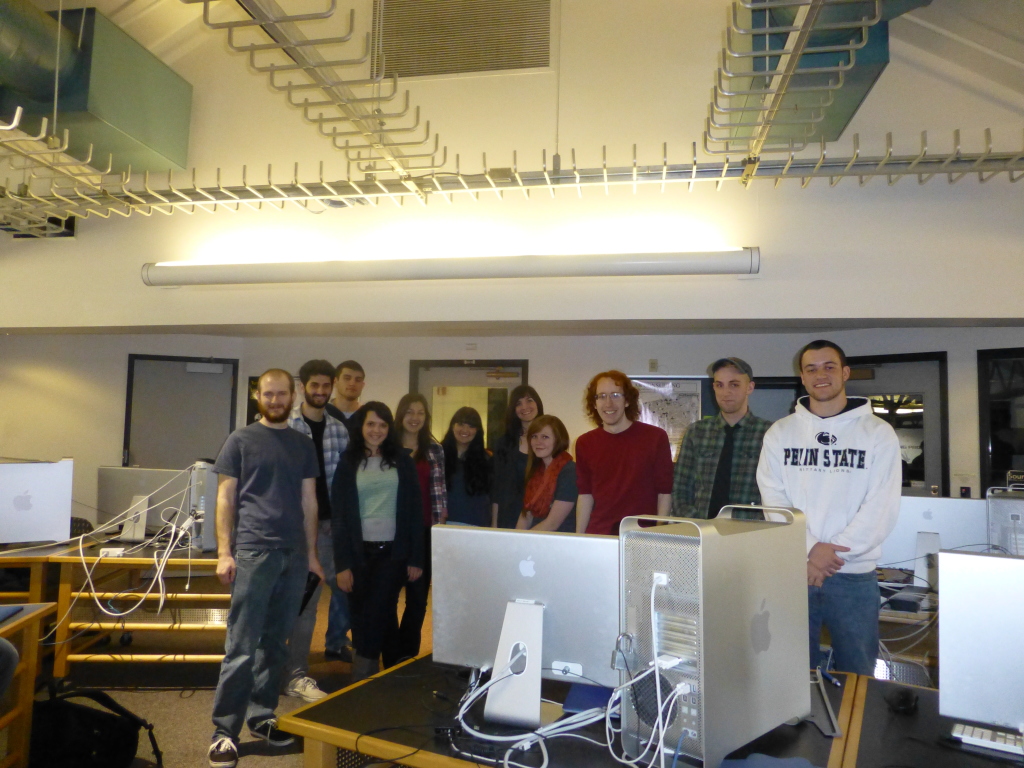See Student Work Examples
On Serious Games in the Curriculum:
Serious games or applied games (i.e., a game designed for a primary purpose other than pure entertainment) is an important area for new media art and digital design curriculum, and Professor Mat Kenyon, Professor Darla Lindberg, and I had implemented these applied gaming concepts and strategies throughout several courses in the iDS curriculum. The flap book project and resulting collaboration presented a unique opportunity to have advanced students (in iDS, Photography, etc.) participate in an interdisciplinary and collaborative design project that would ultimately lead towards the development of an interactive “game based” framework for creating and publishing web viewable (virtual) moveable books.
Expanding the curriculum and experimenting with virtual flap books:
One of the more interesting connections I found as an educator and new media artist and designer was how effectively the simple “game play” and basic animation (flip book) based narratives that appear in the original children’s metamorphic picture books translate/morph and engage the viewer— I am very interested in exploring this with my students as it is a very simple, elegant and functional framework for basic narrative investigations into linear/non-linear game space. Additionally, I have become very interested in how additional atmospheric elements and media (audio, video) impacts how the virtual book “transformational space” is perceived and interacted (played with) in this 3d virtual space.
In Spring 2014:
In my AA310 Creative Collaboration Studio Course (with iDS majors) we are planning on exploring the possibilities of these flap book “transformational” formats and narratives when introduced with “themed” non-linear time-based (overlays) using the Unity 3d. This will be a 4 week team-based media project resulting in a series of finished student-authored virtual flap books.

For Student Participants involved:
- Opportunity to brainstorm, research and design models, proofs and prototypes in an applied “serious game” (learning) based project
- Using a rapidly growing 3d development tools like Unity 3d game engine for non-entertainment purpose
- curriculum related themes central to media art and design practice were put to test in particular:
- Concepts/strategies used in applied research and forms of “serious gaming” as a learning tool
- Software and application development and coding
- Asset and framework (backend development) for content creation
- UX User Experience and Interaction Design, etc. (Seth Wieder is now a Software Developer and UX Designer for Kaon Interactive in Boston and placed his internship experience on his LinkedIn CV)
- Framework revisions, updates and debugging
- Publishing for online delivery and accessibility (Troubleshoot delivery and compliance concerns, etc.)
- for student’s resume and for some internship experience and coursework credit struggles but equally important for students:
- being aware of personal skill level necessary for development
- real world (project based) problem solving and adaptability
- Time and task management (importance of deliverables) and not taking on more than you can chew
- Understanding importance of communication and related issues/concerns when entering and exiting collaborative projects in progress
- How to responsibly code and archive design work with proper commenting on code and proper project management notes, etc.

In my own creative research/investigations:
In my own creative practice and research, I have developed several variants and iterations of flap book concepts derived from the basic framework developed. One of these was recently exhibited and cataloged in Artspace’s Scan2Go project. The Metamorphosis Project: Flipping the Grid is an ongoing series of virtually published interactive vignettes that explores some of my interests and research that seeks to open a critical space to reconsider notions of non-place1 and contemporaneity in a pervasive hertzian landscape.
Scan2Go was a project of ARTspace presented at CAA’s 100th Annual Conference, held in Los Angeles, February 22 through 25, 2012. This year-long project was the first project in a series of three that included AR2View (2013) and Art2Make (2014). Scan2Go (2012) used QR codes to link artworks and websites from the catalogue to the viewer on their cell phone.
Written by Carlos Rosas
